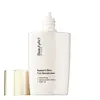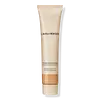BeautyAct Radiant Skin Tint Moisturiser Versus Laura Mercier Tinted Moisturizer Natural Skin Perfector SPF 30
What's inside
What's inside
 Key Ingredients
Key Ingredients

 Benefits
Benefits

 Concerns
Concerns

 Ingredients Side-by-side
Ingredients Side-by-side

Water
Skin ConditioningPhenyl Trimethicone
Skin ConditioningAlcohol Denat.
AntimicrobialDimethicone
EmollientIsododecane
EmollientEthylhexyl Methoxycinnamate
UV AbsorberSilica
AbrasiveButylene Glycol
HumectantPEG-10 Dimethicone
Skin ConditioningTitanium Dioxide
Cosmetic ColorantMethyl Methacrylate Crosspolymer
Polymethylsilsesquioxane
Mica
Cosmetic ColorantSodium Chloride
MaskingDimethicone/PEG-10/15 Crosspolymer
Isohexadecane
EmollientSqualane
EmollientPotassium Sorbate
PreservativeSodium Dehydroacetate
PreservativeCaprylic/Capric Triglyceride
MaskingDisodium Stearoyl Glutamate
CleansingTocopheryl Acetate
AntioxidantIsopropyl Titanium Triisostearate
EmollientAluminum Hydroxide
EmollientDipropylene Glycol
HumectantSodium Citrate
BufferingRubus Idaeus Leaf Cell Culture
Skin ConditioningTocopherol
AntioxidantCI 77491
Cosmetic ColorantCI 77492
Cosmetic ColorantCI 77499
Cosmetic ColorantWater, Phenyl Trimethicone, Alcohol Denat., Dimethicone, Isododecane, Ethylhexyl Methoxycinnamate, Silica, Butylene Glycol, PEG-10 Dimethicone, Titanium Dioxide, Methyl Methacrylate Crosspolymer, Polymethylsilsesquioxane, Mica, Sodium Chloride, Dimethicone/PEG-10/15 Crosspolymer, Isohexadecane, Squalane, Potassium Sorbate, Sodium Dehydroacetate, Caprylic/Capric Triglyceride, Disodium Stearoyl Glutamate, Tocopheryl Acetate, Isopropyl Titanium Triisostearate, Aluminum Hydroxide, Dipropylene Glycol, Sodium Citrate, Rubus Idaeus Leaf Cell Culture, Tocopherol, CI 77491, CI 77492, CI 77499
Butyl Methoxydibenzoylmethane 2.5%
UV AbsorberEthylhexyl Methoxycinnamate 7.49%
UV AbsorberOctocrylene 2%
UV AbsorberBenzophenone-3 1%
UV AbsorberWater
Skin ConditioningGlycerin
HumectantButylene Glycol
HumectantDimethicone
EmollientPEG/PPG-14/7 Dimethyl Ether
Skin ConditioningHydrogenated Polydecene
EmollientPEG-5 Glyceryl Stearate
EmulsifyingIsododecane
EmollientSilica
AbrasivePhenyl Trimethicone
Skin ConditioningTrehalose
HumectantPhenoxyethanol
PreservativeTocopherol
AntioxidantButyrospermum Parkii Butter
Skin ConditioningMacadamia Ternifolia Seed Oil
EmollientAleurites Moluccanus Seed Oil
Skin ConditioningRhus Verniciflua Peel Wax
Tamarindus Indica Seed Gum
Emulsion StabilisingSaccharide Isomerate
HumectantPentylene Glycol
Skin ConditioningIsostearic Acid
CleansingGlyceryl Stearate Se
EmulsifyingPolysilicone-11
Behenyl Alcohol
EmollientBehenic Acid
CleansingStearic Acid
CleansingBatyl Alcohol
EmollientHydroxypropyl Methylcellulose Stearoxy Ether
PEG-30 Phytosterol
EmulsifyingDisodium EDTA
Sodium Metaphosphate
BufferingCarbomer
Emulsion StabilisingPolyacrylate Crosspolymer-6
Emulsion StabilisingPotassium Hydroxide
BufferingBHT
AntioxidantSodium Citrate
BufferingCitric Acid
BufferingT-Butyl Alcohol
PerfumingTitanium Dioxide
Cosmetic ColorantIron Oxides
Butyl Methoxydibenzoylmethane 2.5%, Ethylhexyl Methoxycinnamate 7.49%, Octocrylene 2%, Benzophenone-3 1%, Water, Glycerin, Butylene Glycol, Dimethicone, PEG/PPG-14/7 Dimethyl Ether, Hydrogenated Polydecene, PEG-5 Glyceryl Stearate, Isododecane, Silica, Phenyl Trimethicone, Trehalose, Phenoxyethanol, Tocopherol, Butyrospermum Parkii Butter, Macadamia Ternifolia Seed Oil, Aleurites Moluccanus Seed Oil, Rhus Verniciflua Peel Wax, Tamarindus Indica Seed Gum, Saccharide Isomerate, Pentylene Glycol, Isostearic Acid, Glyceryl Stearate Se, Polysilicone-11, Behenyl Alcohol, Behenic Acid, Stearic Acid, Batyl Alcohol, Hydroxypropyl Methylcellulose Stearoxy Ether, PEG-30 Phytosterol, Disodium EDTA, Sodium Metaphosphate, Carbomer, Polyacrylate Crosspolymer-6, Potassium Hydroxide, BHT, Sodium Citrate, Citric Acid, T-Butyl Alcohol, Titanium Dioxide, Iron Oxides
 Reviews
Reviews

Ingredients Explained
These ingredients are found in both products.
Ingredients higher up in an ingredient list are typically present in a larger amount.
Butylene Glycol (or BG) is used within cosmetic products for a few different reasons:
Overall, Butylene Glycol is a safe and well-rounded ingredient that works well with other ingredients.
Though this ingredient works well with most skin types, some people with sensitive skin may experience a reaction such as allergic rashes, closed comedones, or itchiness.
Learn more about Butylene GlycolDimethicone is a type of synthetic silicone created from natural materials such as quartz.
What it does:
Dimethicone comes in different viscosities:
Depending on the viscosity, dimethicone has different properties.
Ingredients lists don't always show which type is used, so we recommend reaching out to the brand if you have questions about the viscosity.
This ingredient is unlikely to cause irritation because it does not get absorbed into skin. However, people with silicone allergies should be careful about using this ingredient.
Note: Dimethicone may contribute to pilling. This is because it is not oil or water soluble, so pilling may occur when layered with products. When mixed with heavy oils in a formula, the outcome is also quite greasy.
Learn more about DimethiconeEthylhexyl Methoxycinnamate is an organic compound that provides UVB protection. It often goes by the more common name of octinoxate. It is created from methoxycinnamic acid and 2-ethylhexanol.
Ethylhexyl Methoxycinnamate absorbs UVB rays with wavelengths between 280-320 nm. UV absorbers protect your skin by using chemical reactions to convert UV rays into heat and energy.
UVB (290-320 nm) rays emit more energy than UVA rays. They are capable of damaging DNA, causing sunburns and are thought to be linked to skin cancer.
The state of Hawaii has banned sunscreens containing octinoxate due to its potential impact on coral reefs. More research is needed to bridge gaps in this research. The European Union allows higher levels of octinoxate in sunscreens than the US and Australia.
Ethylhexyl Methoxycinnamate is oil soluble. It is not stable and may lose efficacy when exposed to sunlight.
Learn more about Ethylhexyl MethoxycinnamateIsododecane is a fragrance, emollient, and solvent.
As an emollient, it helps your skin stay soft and hydrated. Emollients help trap moisture into your skin.
Isododecane's role as a solvent makes it a great texture enhancer. It spreads smoothly on skin and does not leave a sticky feeling behind. Isododecane also helps prevent color transfer in makeup products.
Isododecane is not absorbed into skin.
Learn more about IsododecanePhenyl Trimethicone is a silicon-based polymer. It is derived from silica.
Phenyl Trimethicone is used as an emollient and prevents products from foaming.
As an emollient, it helps trap moisture in the skin. It is considered an occlusive.
Learn more about Phenyl TrimethiconeSilica, also known as silicon dioxide, is a naturally occurring mineral. It is used as a fine, spherical, and porous powder in cosmetics.
Though it has exfoliant properties, the function of silica varies depending on the product.
The unique structure of silica enhances the spreadability and adds smoothness, making it a great texture enhancer.
It is also used as an active carrier, emulsifier, and mattifier due to its ability to absorb excess oil.
In some products, tiny microneedles called spicules are made from silica or hydrolyzed sponge. When you rub them in, they lightly polish away dead skin layers and enhance the penetration of active ingredients.
Learn more about SilicaSodium Citrate is the sodium salts of citric acid. In skincare, it is used to alter pH levels and acts as a preservative.
Its main functions are to maintain the pH of a product and neutralize metal ions.
The acidity of our skin is maintained by our glands and skin biome; normal pH level of skin is slightly acidic (~4.75-5.5).
Being slightly acidic allows our skin to create an "acid mantle". This acid mantle is a thin barrier that protects our skin from bacteria and contaminants.
Learn more about Sodium CitrateTitanium dioxide is a mineral UV filter widely used in sunscreens and cosmetics.
It is one of only two UV filters officially classified as “mineral” by regulatory agencies, the other being zinc oxide.
Titanium dioxide provides broad-spectrum protection mostly in the UVB and UVAII range, with some protection in the UVAI range.
While its UVA protection isn’t as strong as zinc oxide’s, the difference is minor.
A common myth is that mineral UV filters reflect UV light. However, modern research shows titanium dioxide absorbs UV radiation like chemical filters (~95% absorption & 5% reflection).
Thanks to its non-irritating nature, titanium dioxide is suitable for sensitive, acne-prone, or redness-prone skin. It is unlikely to cause "eye sting" like other sunscreen ingredients.
A major drawback of this ingredient is its white cast and thick texture. This is why mineral sunscreens often leave a white cast and are less cosmetically elegant than chemical/hybrid sunscreens.
To improve white cast and spreadability, micronized or nano-sized titanium dioxide is often used.
There are ongoing concerns surrounding nano-titanium oxide's impact on marine ecosystems.
There is no conclusive evidence that any form of titanium oxide (or any other sunscreen ingredients) will cause harm to marine ecosystems or coral reefs. The science is still developing but many consumers are keeping a close eye on this issue.
Please note, many destinations have reef-safety sunscreen rules. For instance, the U.S. Virgin Islands advises all visitors to use non-nano mineral sunscreens.
Nano mineral sunscreens once raised safety concerns about absorption into skin.
Extensive research has shown that they do not penetrate healthy or damaged skin; they remain safely on the surface and the top layer of dead skin (stratum corneum).
You'll likely find titanium dioxide bundled with alumina, silica, or dimethicone. These ingredients help make titanium dioxide highly photostable; this prevents it from interacting with other formula components under UV light.
Learn more about Titanium DioxideTocopherol (also known as Vitamin E) is a common antioxidant used to help protect the skin from free-radicals and strengthen the skin barrier. It's also fat soluble - this means our skin is great at absorbing it.
Vitamin E also helps keep your natural skin lipids healthy. Your lipid skin barrier naturally consists of lipids, ceramides, and fatty acids. Vitamin E offers extra protection for your skin’s lipid barrier, keeping your skin healthy and nourished.
Another benefit is a bit of UV protection. Vitamin E helps reduce the damage caused by UVB rays. (It should not replace your sunscreen). Combining it with Vitamin C can decrease sunburned cells and hyperpigmentation after UV exposure.
You might have noticed Vitamin E + C often paired together. This is because it is great at stabilizing Vitamin C. Using the two together helps increase the effectiveness of both ingredients.
There are often claims that Vitamin E can reduce/prevent scarring, but these claims haven't been confirmed by scientific research.
Learn more about TocopherolWater. It's the most common cosmetic ingredient of all. You'll usually see it at the top of ingredient lists, meaning that it makes up the largest part of the product.
So why is it so popular? Water most often acts as a solvent - this means that it helps dissolve other ingredients into the formulation.
You'll also recognize water as that liquid we all need to stay alive. If you see this, drink a glass of water. Stay hydrated!
Learn more about Water